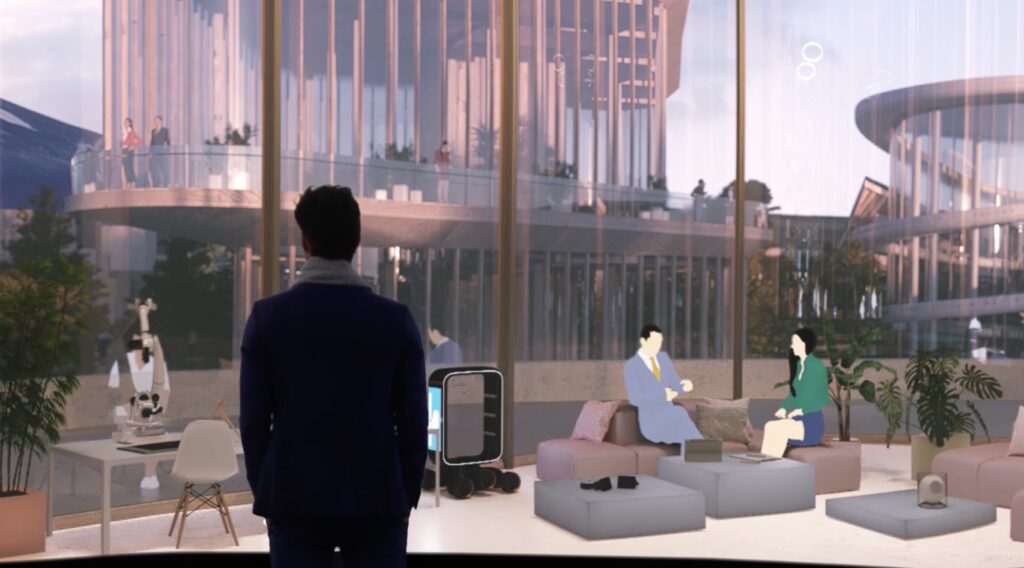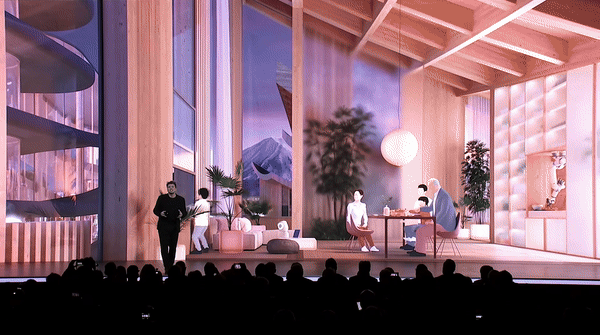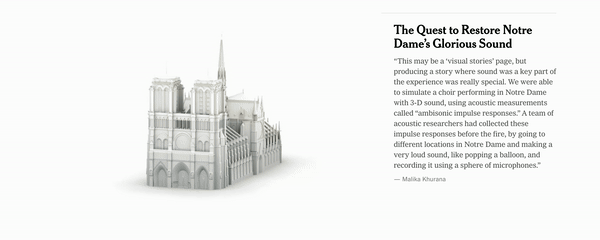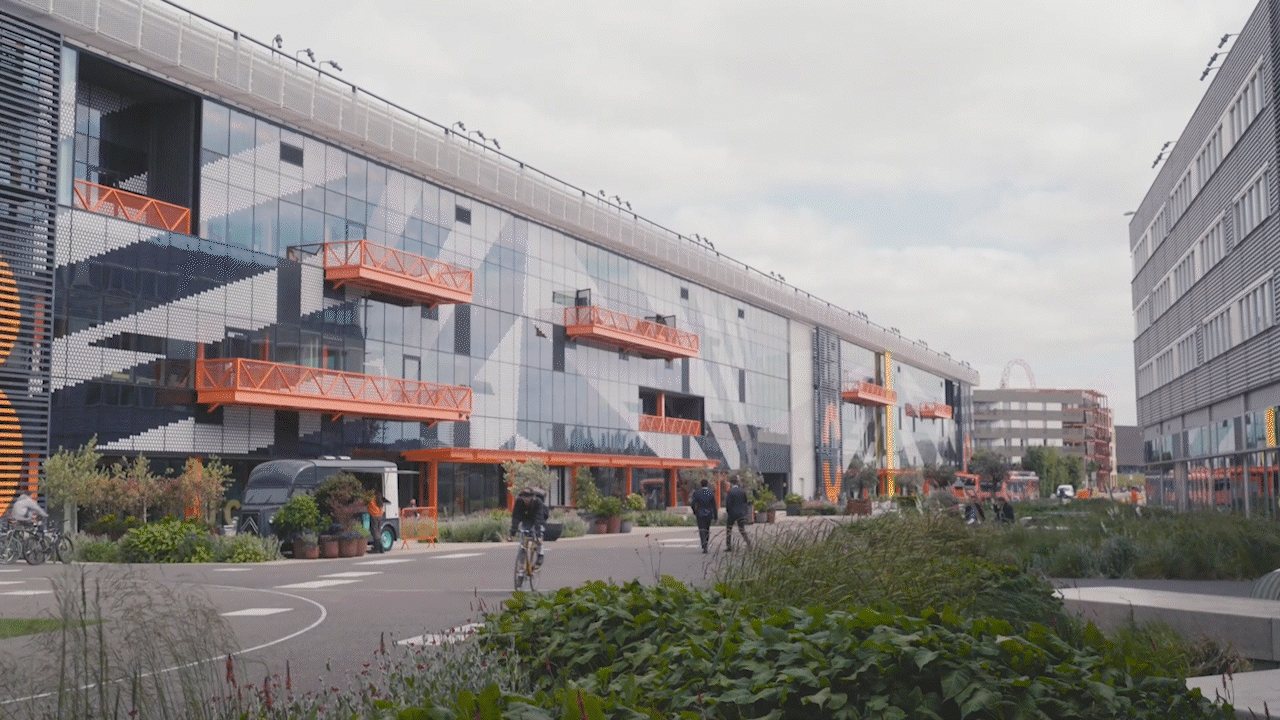Decks, decks, and more decks
Whether you’re delivering a keynote, pitching creative, seeking approval for a project, or trying to secure investments, a compelling presentation is often held up as the key to success. Presentations have become a rite of passage, an essential part of making decisions and signing deals. So why is their current format so often static and predictable?
There could be so much more to a compelling visual presentation than a slide deck. And yet servers across the globe are steadily filling with endless PowerPoints and Google Slides, the visual Muzak of the boardroom. If your eyes are glazing over at the thought of it, you’re not alone.
The world is experiencing massive innovations in technology, art, and design. Now it’s time for the humble presentation to catch up.
The art of the presentation: a brief history
Visual presentations have been essential to human endeavors for centuries. You can see their importance in everything from the illustrated shop signs in ancient Rome and medieval England to this 19th-century painting that portrays Pope Julius II ordering the construction of the Vatican.

Over the years, presentation tools have evolved from the rudimentary (chalkboards, whiteboards, flip charts) to the highly sophisticated. In the 1950s and 1960s, salesmen used slide projectors, acetate overheads, and A/V technology to sell their ideas. In the 1970s and 1980s, 35-millimeter film slides took over and — supported by a backup staff of producers, photographers, animators, slide programmers, and live production staff — dazzled corporate audiences at shareholder meetings.
Meanwhile, some experimented with the boundary between art and exposition. The British artist and architect Will Alsop, for example, created impressionistic paintings to convey the visions for his colorful and extraordinary avant-garde buildings.

Fashion designer Alexander McQueen created a giant chess game on a catwalk, seated a skeleton in his audience, programmed two robots to spray paint at a model’s dress, staged a pile of crashed cars, and much more.
By the 1990s, PowerPoint 3.0 had brought the virtual slideshow to the public. It rapidly took over the industry, reaching more than a billion computers by 2010 and working its way into school lessons, religious sermons, retirement parties, and most modern workplaces.
Today, the business presentation industry is worth an estimated $3.5 billion and includes tools like Canva, Prezi, Keynote, Slide Dog, Visme, Google Slides, and, yes, the still-ubiquitous PowerPoint. More presentations are being created than ever before — and many of them are desperately in need of an upgrade.
The presentations of tomorrow
What will the presentation of the future look like?
Video presentations will become (even) more popular, enabled by both AI (see below) and the rise of virtual production techniques that allow presenters to position themselves within the idea they’re presenting. Journey’s team in London experimented with this technology with our 360-degree immersive exhibition and animated film for Toyota Woven City, a “living laboratory” for testing smart technologies and sustainable living in Japan. Our experience offered a choreographed tour through life-sized scenes and a digital horizon effect that made the presenter appear to walk around inside the visuals.

Interactive presentations, like those New York Times articles that zoom or play relevant animations as you scroll, will become more popular. Instead of clicking through a PowerPoint, people can scroll through and explore a presentation at their own pace, which allows for a style of presentation that’s less linear and more similar to the experience of physically exploring a neighborhood, gallery, or exhibition.

Three-dimensional representations will also become more common. These could range from virtual 3D models seen through AR to spatial computing headsets (see our platform SpaceForm) to actual physical models with haptic feedback that can provide information as viewers point at or touch certain parts.
The biggest development, of course, will be artificial intelligence. People will increasingly use AI to whip up videos, illustrations, and text for presentations. Groundbreaking tools like OpenAI’s Sora are already replacing stock footage, allowing studios and agencies to put together custom film pitches and visualize ambitious projects at the touch of a button. If you can imagine it, you can now present it.

Presenting… without the presentation
Because of these new technologies, the value of the traditional slide deck is plummeting. The presentation of the future will still need a strong narrative, compelling visuals, and a good hook. What it won’t need? The slides themselves.
Technologies like virtual twins will allow people to explore potential worlds in real-time. Instead of basic slide animations, we’ll see avatars, virtual tour guides, and custom chatbot APIs to customize the viewing experience. AI tools will enhance brainstorming and pitch presentations, allowing people to easily spin up storyboards and other mockups to reach a consensus on how a project should look. Meanwhile, real-time avatars will allow us to show clients around their virtual building site, offering a much more compelling experience than a slideshow of photos and digital renderings.

The space will become the presentation. At Journey, we use the top floor of our London studio as an immersive presentation room. Visitors never come into contact with the dreaded slide; instead, they play with touchscreens, PlayStation controllers, and other interactive elements that trigger screen actions. Other immersive spaces like Sandbox VR will enable clients to fully explore proposed projects and imagined worlds — anything from a new film or video game concept to a giant concert venue or ultra-luxury shopping center.

Interactivity will allow for the gamification of presentations, promote open discussion, and allow people to play around with different outcomes. (Think “brainstorming with” versus “talking at.”) The end result will be a more dynamic, multifaceted interchange between presenter and viewer.
Where we go from here
The presentations of the future will increasingly be like living, breathing worlds we inhabit. They’ll transcend traditional boundaries, allowing us to gain a better understanding of concepts and share visionary ideas with fewer roadblocks.
Instead of the linear, fixed, and often rigid narratives that we see in today’s presentations, we’ll be able to explore more fluid and flexible ways of sharing information. Viewers will no longer be confined to their seats during a slide deck lecture; they’ll be moving around the room and engaging with the content right at their fingertips. The outcome will be a deeper and more holistic experience, one that opens the door to better communication and more creative collaborations.

Of course, different presentations will require different tools and approaches. But each of these technologies — AI, virtual twins, interactivity, and immersivity — share one thing in common. They’ll be able to make the presentation of the future an engaging, organic, and (mostly) downright exciting experience, one in which almost anything might happen.


